 June 26, 2014 John E. Ross, KD8IDJ, Editor
| |||||||||||
NOTICE: Effective July 1, the ARRL is upgrading its website's Secure Socket Layer (SSL) certificate to keep abreast of industry standards. This upgrade only affects HTTPS (secure) pages on the ARRL website, including the e-store checkout pages, any pages that accept donations, or pages that allow amateurs to join the ARRL or renew their memberships. As a result of this upgrade, users running Windows XP Service Pack 2 or earlier Windows operating systems will not be able to access these pages. To ensure uninterrupted service, Windows XP Service Pack 2 users are encouraged to upgrade to Service Pack 3 or to Windows 7 or Windows 8. If you don't know which Windows operating system you have, visit Microsoft support. Contact your computer professional or service center, if you have questions or encounter problems updating your system. House Bill Would Require FCC to Extend PRB-1 Coverage to Restrictive Covenants A bill with bipartisan support has been introduced in the US House of Representatives that calls on the FCC to apply the "reasonable accommodation" three-part test of the PRB-1 federal pre-emption policy to private land-use restrictions. HR.4969, the "Amateur Radio Parity Act of 2014" was introduced on June 25 at the request of the ARRL, which worked with House staffers to draft the proposed legislation. The bill's sponsor is Rep Adam Kinzinger (R-IL). It has initial co-sponsorship from Rep Joe Courtney (D-CT). If the measure passes the 113th Congress, it would require the FCC, within 120 days "There is a strong federal interest in the effective performance of Amateur Radio stations established at the residences of licensees," the bill states. "Such stations have been shown to be frequently and increasingly precluded by unreasonable private land-use restrictions, including restrictive covenants." The 11-page PRB-1 FCC Memorandum Opinion and Order is codified at § 97.15(b) in the FCC Amateur Service rules, giving the regulation the same effect as a federal statute. In short, PRB-1 states that local governments cannot preclude Amateur Radio communications; they must "reasonably accommodate" amateur operations, and the state and local regulations must be the minimum practicable regulation to accomplish a legitimate governmental interest. Subject to those guidelines, municipalities may still establish regulations with respect to height, safety, and aesthetic concerns. For 28 years, FCC regulations have "prohibited the application to Amateur Radio stations of state and local regulations that preclude or fail to reasonably accommodate Amateur Service communications," the bill points out, "or that do not constitute the minimum practicable regulation to accomplish a legitimate state or local purpose." Since PRB-1 was enacted, the FCC has said several times that it would prefer to have some guidance from Congress before extending the policy to private land-use regulations. HR.4969 has been referred to the House Energy and Commerce Committee. Rep Greg Walden, W7EQI (R-OR), chairs that panel's Communications and Technology Subcommittee, which will consider the measure. ARRL Hudson Division Director Mike Lisenco, N2YBB, is a principal advocate for the current legislative initiative to gain PRB-1 recognition for CC&Rs. Lisenco said the most urgent task now is to get additional co-sponsors to sign onto HR.4969. Changes to Amateur Service Part 97 Rules Go Into Effect on July 21 The FCC's recently announced revisions to the Part 97 Amateur Radio rules governing exam credit to former licensees, test administration, and emission types will go into effect on Monday, July 21. The new rules were published in The Federal Register on June 20. Earlier this month, the Commission announced that it would grant examination credit for written elements 3 (General) and 4 (Amateur Extra) to holders of "expired licenses that required passage of those elements." The FCC will require former licensees falling outside the 2-year grace period to pass Element 2 (Technician) in order to be relicensed. The Commission declined to give exam credit to holders of expired Certificates of Successful Completion of Examination (CSCEs) or to extend lifetime validity to CSCEs. The FCC also embraced the use of remote testing methods, allowing volunteer examiners and volunteer examiner coordinators "the option In addition, the FCC adopted an ARRL proposal to authorize certain Time Division Multiple Access (TDMA) emissions in the Amateur Service. The Wireless Telecommunications Bureau in 2013 granted an ARRL request for a temporary blanket waiver to permit radio amateurs to transmit emissions with designators FXD, FXE, and F7E, pending resolution of the rulemaking petition. That waiver becomes permanent on July 21. The Commission also made "certain minor, non-substantive amendments" and corrections to the Amateur Service rules. Full Schedule of Youth Activities Featured at ARRL National Centennial Convention The ARRL National Centennial Convention July 17-19 in Hartford, Connecticut, will feature a wide-ranging slate of youth activities aimed at younger hams and prospective hams. Scheduled on Friday and Saturday, the youth activities include two youth forums, a hidden transmitter hunt, a scavenger hunt, and the Youth Radio Lab. The ARRL Discovery Station in the ARRL exhibit area in the Exhibition Hall Friday and Saturday will highlight programs of interest to visitors of all ages, with an emphasis on younger visitors. A separate forum will expand on some of the Discovery Station presentations and activities.
"The Discovery Station will have a range of hands-on exhibits to help visitors to understand the basics of radio waves, and projects that young operators can explore in the world of exciting world of Amateur Radio," said Tommy Gober, N5DUX, who will head up the ARRL Discovery Station team. "Stop by the Discovery Station to discover the different parts of what makes up a radio wave, try out some of the electronic kits available through the Education & Technology Program (ETP), and get inspired to create something of your own."
Visitors do not need to be Amateur Radio licensees to attend the convention, but registration is required for all attendees, including youth. Two-day tickets (Friday and Saturday) are free for those who are age 21 or younger. Advance registration is recommended. Youth Forum Schedule
Newly Minted Ham Hopes His Celestial Concert is Not HAARP'S Final Opus Not long before the US Air Force notified Congress in May that it planned to dismantle the High Frequency Active Auroral Research Program -- better known as HAARP -- a researcher at the unique and
controversial facility near Gakona, Alaska, briefly turned its ultra-high power HF transmitter into a celestial musical instrument. That "music of the spheres" could turn out to be HAARP's swan song. The Air Force has told lawmakers that keeping HAARP in operation would not be a good use of its research funds. In April, when he orchestrated HAARP's turn on the musical stage, Chris Fallen, now KL3WX -- he got his Technician ticket on May 5 -- was training as a HAARP operator on the outside chance that his alma mater, the University of Alaska Fairbanks (UAF), might take over the sprawling plant. As a UAF grad student, Fallen wrote his thesis on HAARP, inspired by a 2005 visit to a HAARP open house. Now a UAF assistant professor of space engineering, Fallen is distressed that he might not be able to continue his investigations. But don't look for Maestro Fallen to take the HAARP Farewell Tour on the road just yet. As NPR's "All Things Considered" news magazine reported on June 10, Fallen used HAARP's 3 GW transmitter and 30-acre antenna farm in April to create music that literally came from above. Employing what is known as the Luxembourg Effect, in which the ionosphere serves as a heavenly mixing device for radio signals on different frequencies, Fallen transmitted separate pieces of music directly skyward from
HAARP. In his report, "Bye-Bye To The Home Of A Favorite Internet Conspiracy Theory," NPR's Geoff Brumfield said the Luxembourg Effect blended the different pieces together. As Fallen explained, "These two different musical performances were essentially mixed in space." The result was an otherworldly "New Age" type concerto reminiscent of a glass harp composition, no pun intended. Students visiting UAF composed two "complementary pieces" of music for the experiment, according to a report in The Anchorage Press. Fallen explained on NPR that he transmitted one of the pieces at 3.25 MHz, the other at 4.25 MHz. The ionosphere reflected the resulting "mix tape" of sorts back to Earth for the listening pleasure of Fallen and his, uhhh, co-conspirators. The Air Force told Congress that it intended to call in the wrecking ball as early as this summer, but things now are in limbo. Built in 1990 at a cost of nearly $300 million, HAARP's immediate trajectory toward the scrap heap has been paused, while the Air Force and UAF attempt to work out a deal to have the university take over HAARP -- lock, stock, and conspiracy theories.
Fallen said a couple of the scientists with him on site in April were hams, and conversations during lulls in their research turned toward vintage radio gear. "News about the future of HAARP from AFRL was increasingly grim, and, as I have been working with the instruments there for several years, I started to pursue a ham license to continue working with radio in some capacity, particularly the HF bands, where the ionosphere plays an important role." He is already preparing to upgrade to General. Fallen told ARRL that he remains optimistic that HAARP will support additional research campaigns in the short term, but "nothing would surprise me at this point." As he sees it, HAARP's future will in part depend on "the creativity of the atmospheric science and radio communities for developing new operational and funding models." -- Read more. June 19 Launch Puts Several New Amateur Radio Payloads into Orbit A Dnepr launch vehicle carried several Amateur Radio payloads aloft from Russia on June 19. The 37 spacecraft for research and commercial applications, about one-third of them carrying Amateur Radio packages, marked a new record for the most spacecraft launched by a single rocket . Among the Amateur Radio payloads now
in orbit is FUNcube-3, a transponder-only payload on the QB50 precursor CubeSat, QB50p1. FUNcube-3 carries an inverting 400 mW SSB/CW transponder, with an uplink passband of 435.035-435.065 MHz (LSB) and a downlink passband of 145.935-145.965 MHz (USB). The otherwise nearly identical QB50p2 package carries an Amateur Radio 435/145 MHz FM voice transponder as well as packet on 145.880 MHz, 1200bps BPSK and 145.840 MHz, 9600 bps FSK. The QB50 satellites will become available to radio amateurs after 6 months of testing. The QB50 program plans to launch a constellation of 50 small science research satellites.
TabletSat-Aurora, built in Russia, carries a experimental D-STAR parrot (store-and-forward) repeater running 0.8 W (GMSK) on 437.050 MHz (±10 kHz). It can store a voice message of up to 8 seconds. Two other transceivers on the satellite operate on 435.550 MHz and 436.100 MHz. Their power can be varied by ground-station command from between 0.8 and 2.0 W. They will be used for command and control and transmit GMSK telemetry data.Unofficial reports indicate that the D-STAR repeater could become operational in early July and that when the D-STAR repeater is active telemetry will be turned off. In the hours immediately following the launch, signals were reported from FUNcube-3, POPSAT, QB50p1, QB50p2, UniSat-6, BugSat-1 -- the first satellite to be deployed after launch -- NanosatC-BR1, Duchifat-1, TabletSat-Aurora, and DTUsat-2. BugSat-1 contains an Amateur Radio digipeater, which will be activated after the satellite's primary mission has been completed. UniSat-6, which transmits on 437.425 MHz (9600 bps GFSK at 2 W) with the call sign II0US, carried Tigrisat, Lemur 1, ANTELSat, and AeroCube 6. ANTELSat is the first Uruguayan satellite. It carries a telemetry downlink and a command uplink (437.575 MHz 1200 bps AFSK) with a 2403.000 MHz (1 Mbit GFSK/MSK) downlink for payload data, and a 437.280 MHz CW beacon. W1AW Centennial Operations Now in Illinois and Maryland The ARRL Centennial W1AW WAS operations taking place throughout 2014 from each of the 50 states are now in Illinois and Maryland. They will relocate at 0000 UTC on Wednesday, July 2 (the evening of July 1 in US time zones), to Wisconsin (W1AW/9) and Utah (W1AW/7). During 2014 W1AW will be on the air from every state (at least twice) and most US territories, and it will be easy to work all states solely by contacting W1AW portable operations. Some schedule changes have been made, and the W1AW WAS list has been updated to reflect these.
Working W1AW/x from each state is worth 5 points per mode/contact, even when working the same state during its second week of activity. To earn the "Worked all States with W1AW Award," work W1AW operating portable from all 50 states. (Working W1AW or W100AW in Connecticut does not count for Connecticut, however. For award credit, participants must work W1AW/1 in Connecticut.) A W1AW WAS certificate and plaque will be available. The ARRL has posted an ARRL Centennial QSO Party leader board that participants can use to determine how many points they have accumulated in the Centennial QSO Party and in the W1AW WAS operations. Log in using your Logbook of The World (LoTW) user name and password, and your position will appear at the top of the leader boards. Results are updated daily, based on contacts entered into LoTW. SAQ "Alexanderson Day" Transmissions Set for June 29 and July 2 The annual "Alexanderson Day" transmission from the World Heritage Grimeton site in Sweden, using the vintage Alexanderson alternator on 17.2 kHz, will take place Sunday, June 29 at 0900 UTC (SAQ will start tuning at about 0830 UTC) and again at 1200 UTC (SAQ will start tuning at about 1130 UTC). Another SAQ transmission will take place on July 2 at 1430 UTC (SAQ will start tuning at about 1400 UTC), to mark 10 years since SAQ was designated as a World Heritage site. "Alexanderson Day" Amateur Radio activity from SAQ Grimeton club station SK6SAQ will get underway at about 0800 and continue until about 1400 UTC, except during SAQ transmissions. Listen for SK6SAQ on 14.035 MHz (CW), 14.215 MHz (SSB), and 3.535 MHz (CW) QSL via the bureau. QSL reports for SAQ are welcome via e-mail or via the bureau, or QSL
direct to Alexander-Grimeton Veteranradios Vaenner, Radiostationen, Grimeton 72 SE-432 98 GRIMETON, Sweden. In January, SAQ reported that nearly 300 listeners -- most of them in Europe -- reported hearing the 17.2 kHz CW transmission from SAQ on Christmas Eve 2013. The reports included three from the US. Dating from the 1920s, the Alexanderson alternator -- essentially an ac alternator run at extremely high speed -- can put out 200 kW but typically is operated at less than one-half that power level. Once providing reliable transatlantic communication, it is now a museum piece and only put on the air on special occasions. The transmitter was developed by Swedish engineer and radio pioneer Ernst Alexanderson, who was employed at General Electric in Schenectady, New York, and was chief engineer at the Radio Corporation of America. Six 400+ foot towers with 150 foot crossarms support a multi-wire antenna for SAQ. The actual signal radiates from vertical wires, one from each tower. Amateur Radio station SK6SAQ operates from the Alexanderson alternator site. Amateur Radio Newsline: No Young Ham of the Year in 2014 Amateur Radio Newsline has announced that it will not name a 2014 Young Ham of the Year (YHOTY). Newsline Editor Bill Pasternak, WA6ITF, told ARRL that not enough nominations were received by the May 30 deadline. Young Ham of the Year Award Judging Committee Chair Mark Abramowicz, NT3V, said the committee's decision to defer this award this year due to the low number of nominees "does not in any way reflect on the quality of the nominees we did receive or on their nominators. It's simply the decision of the judges that more nominations and documentation would be needed to make a fair determination of the Young Ham of the Year." Newsline said it plans to open nominations for the 2015 YHOTY in February. SKYWARN Pioneer Alan R. Moller, N5ZCB, SK National Weather Service forecaster, storm chaser, and SKYWARN pioneer Alan "Al" Moller, N5ZCB, of Benbrook, Texas, died June 19. He was 64. Moller and Chuck Doswell were the primary contributors to the development of the national SKYWARN program.
Moller was a Senior Forecaster (retired) at the National Weather Service Fort Worth, Texas, Office, where, the NWS said, he "tirelessly worked to better understand thunderstorms and tornadoes, while at the same time teaching others to responsibly observe and report storm information from the field. He was a voice and a bridge between operational and research meteorology, and thus, was respected by both of these meteorological disciplines." He also was a writer and cinematographer, known for StormWatch (1995), Tornadoes: A Spotter's Guide (1977), and Chasing the Wind (1991). In addition, Moller enjoyed nature and landscape photography. Moller held bachelor's and master's degrees in meteorology from The University of Oklahoma. Doswell, a friend and colleague Moller met at the University of Oklahoma, described Moller as passionate about public service as well as about forecasting and severe storms. According to his Dallas Morning News obituary, Doswell and Moller started a storm-chaser program in 1972, theorizing that weather observations from the field could help forecasters. This established the groundwork for SKYWARN, a volunteer program with nearly 290,000 trained severe-weather spotters, many of them Amateur Radio licensees, who work with NWS forecasters by providing real-time observations. Memorials may be made to the Humane Society of North Texas, 1840 E Lancaster Ave, Fort Worth, TX 76103. Read more. -- Thanks to Sam Barricklow, K5KJ Past IARU Region 1 PZK Liaison Officer Wieslaw "Wes" Wysocki, SP2DX, SK Wieslaw "Wes" Wysocki, SP2DX, of Sopot, Poland, died unexpectedly on June 15. He was 82. Wysocki was an honorary member of the PZK, Poland's International Amateur Radio Union (IARU) member-society. For 10 years he served as IARU Region 1 Liaison Officer for the PZK, attending many Region 1 meetings and conferences. He also was the oldest living founder of the Old Timers Club of the PZK and served for many years as vice president.
Wysocki got into Amateur Radio in the mid-1940s. "He was very involved in the growth and development of Amateur Radio in Poland," said OTC President Ryszard Czerwinski, SP2IW, who called Wysocki "a seasoned CW operator" and avid contester. He said Wysocki helped to revive the PZK in 1956, after years of inactivity during the Stalin era. According to Czerwinski, Wysocki had 330 DXCC entities confirmed, operating with 100 W and wire antennas. "We remember him as a knowledgeable and friendly colleague," Czerwinski said. "Wes was an icon and an example to follow for future generations of Amateur Radio enthusiasts." A Century of Amateur Radio and the ARRL On June 25, 1950, the Korean War began, with a surprise invasion by North Korea. In the days following, Amateur Radio played a valuable Throughout the Korean War, the Military Affiliate (now Auxiliary) Radio Service (MARS) and amateur operators devoted tens of thousands of hours to handling phone patch traffic between military personnel and their families back home. In 1952, W2ZXM/mm, Captain Kurt Carlsen, brought the world's attention to Amateur Radio in a huge way. His command, the passenger/freighter Flying Enterprise, was damaged mid-sea by hurricane-force winds and high seas. "Captain Stay-Put" -- as the news media dubbed him -- ordered crew and passengers to abandon ship when the vessel started taking on water and listing heavily. Using his ham know-how, he managed to stay on the air using improvised equipment, antennas, and power, even after the radio room was flooded. He remained in radio contact from the ship until just before it sank. He was the star of an New York City ticker-tape parade and was knighted by the King of Denmark for his heroism.
The 15 meter band opened for US hams on May 1, 1952 -- at first, for CW only. At the same time, the 40 meter voice sub-band was opened to US hams. On August 15, 1952, the Radio Amateur Civil Emergency Service (RACES) came into being. QST continued to publish article on mobile/portable Civil Defense equipment for 10 and 6 meters. In addition to RACES operation on 10 meters, many hams were becoming quite interested in the band for its DX potential. Two interesting articles appeared in QST describing extreme 10 meter antennas. One was a 3 element vertical beam for mobile use. A quarter-wave director and reflector were added to the typical mobile whip for portable (not mobile) use on a rear bumper-mounted boom. The driver would position the car to "rotate" the antenna. The second extreme antenna was a full-sized Yagi featuring rack-and-pinion gearing to adjust the lengths of each element from the shack, so the antenna could be tuned exactly. A third extreme antenna -- not reported in QST -- was built by a Midwestern ham who commuted daily in his VW Beetle. Much of his commute involved about 40 minutes of driving on a long stretch of highway with no overpasses. He built a quarter-wave mobile antenna that could be assembled and disassembled quickly. When he reached the start of his unobstructed drive, he would put up his antenna and put out a big signal on 40 phone. Lots of things were happening in Amateur Radio in the early 1950s, so next week we will look at that period a bit more. -- Al Brogdon, W1AB The K7RA Solar Update Solar activity continues to weaken, with average daily sunspot numbers dropping nearly 69 points to 72.3, and average daily solar flux down by nearly 36 points to 98.8. Predicted solar flux for Field Day weekend, Friday through Sunday, June 27-29, is 105, 110, and 115. Predicted planetary A index for those dates is 8, 12 and 8. The predicted solar flux for the next 7-day reporting period, June 26-July 2, is 111.4 -- about the same as the forecast for this weekend, but a little above the 98.8 from the previous reporting period, June 19-25.
How will this weekend compare with Field Day 2013? Average solar flux reported for the equivalent period last year, June 20-26, was 122 -- not much higher than this year's numbers. The latest predicted solar flux for the near term is 100, 105, and 110 for June 26-28, 115 for June 29-30, 120, 115, and 135 for July 1-3, 130 for July 4-5, 135, 140, and 135 for July 6-8, 130 for July 9-10, and 125 on July 11. Solar flux continues to drift downward reaching a short term minimum of 95 on July 21, then a high of 140 on August 3. Predicted planetary A index is 5, 8, 12, and 8 for June 26-29, 5 for June 30-July 1, 8 on July 2, then 5 for July 3-10, 8 for July 11, 5 for July 12-13, then 8, 12, 8, and 8 for July 14-17, and 5 after that, returning to 8 for July 22-23. This weekly "Solar Update" in The ARRL Letter is a preview of the "Propagation Bulletin" issued each Friday. The latest bulletin and an archive of past propagation bulletins is on the ARRL website. In this week's Friday bulletin look for an updated forecast and reports from readers. Send me your reports and observations. Just Ahead in Radiosport
Upcoming ARRL Section, State and Division Conventions and Events
Find conventions and hamfests in your area. ARRL -- Your One-Stop Resource for
Subscribe to...
Free of charge to ARRL members...
| |||||||||||
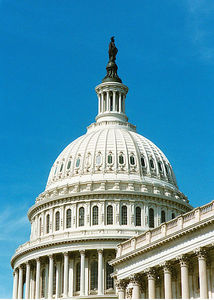 of the Bill's passage, to amend the Part 97 Amateur Service rules to apply PRB-1 coverage to include homeowners' association regulations and deed restrictions, often referred to as "covenants, conditions, and restrictions" (CC&Rs). Presently, PRB-1 only applies to state and local zoning laws and ordinances.
of the Bill's passage, to amend the Part 97 Amateur Service rules to apply PRB-1 coverage to include homeowners' association regulations and deed restrictions, often referred to as "covenants, conditions, and restrictions" (CC&Rs). Presently, PRB-1 only applies to state and local zoning laws and ordinances..jpg) of administering examinations at locations remote from the VEs." The National Conference of Volunteer Examiner Coordinators (NCVEC) in 2002 endorsed experimental use of videoconferencing technology to conduct Amateur Radio testing in remote areas of Alaska. The Commission dropped its earlier proposal to permit two VEs to administer exams; the requirement remains at three VEs. The Commission did not spell out the "mechanics" of remote testing, however, which, it said, would "vary from location to location and session to session." VEs administering examinations remotely must grade such examinations "at the earliest practical opportunity," rather than "immediately," as the current rule for conventional exam sessions requires.
of administering examinations at locations remote from the VEs." The National Conference of Volunteer Examiner Coordinators (NCVEC) in 2002 endorsed experimental use of videoconferencing technology to conduct Amateur Radio testing in remote areas of Alaska. The Commission dropped its earlier proposal to permit two VEs to administer exams; the requirement remains at three VEs. The Commission did not spell out the "mechanics" of remote testing, however, which, it said, would "vary from location to location and session to session." VEs administering examinations remotely must grade such examinations "at the earliest practical opportunity," rather than "immediately," as the current rule for conventional exam sessions requires.
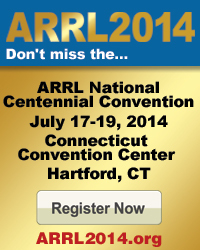
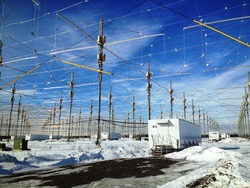
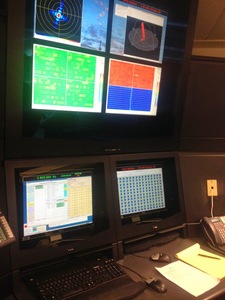

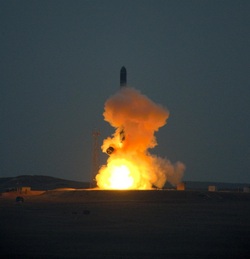
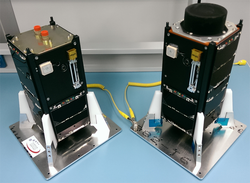
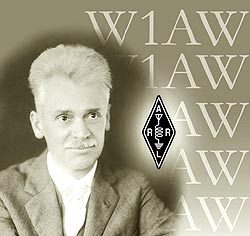 To celebrate the 100th anniversary of the ARRL, the
To celebrate the 100th anniversary of the ARRL, the 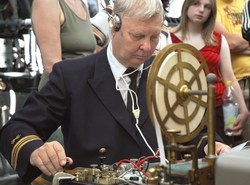
.jpg) "We initiated the award in 1986, so this would have been the 28th year it would have been presented," Pasternak said.
"We initiated the award in 1986, so this would have been the 28th year it would have been presented," Pasternak said..jpg)
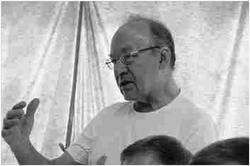
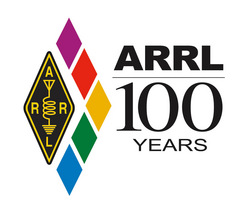 and unexpected role. When the invasion began, military personnel who were hams -- mostly in South Korea, Japan, and the US -- were the first bearers of the bad news, even before military communication links got word back to Washington. Until United Nations military personnel became organized with their own communication, hams continued to provide early radio communication.
and unexpected role. When the invasion began, military personnel who were hams -- mostly in South Korea, Japan, and the US -- were the first bearers of the bad news, even before military communication links got word back to Washington. Until United Nations military personnel became organized with their own communication, hams continued to provide early radio communication.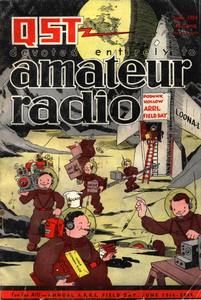
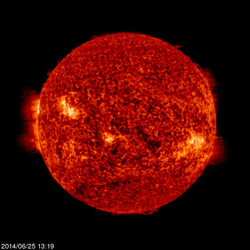 If we look at bulletins for 2014, 98.8 was the lowest average reported flux value. The highest average was 201.6 in the January 2-8 reporting period, and the second was 180.4 in the January 30-February 5 reporting period. The weekly solar flux averages reported in bulletins covering May 8 through June 25 were 157.5, 128.5, 110.3, 104.1, 146.4, 134.7, and 98.8, respectively.
If we look at bulletins for 2014, 98.8 was the lowest average reported flux value. The highest average was 201.6 in the January 2-8 reporting period, and the second was 180.4 in the January 30-February 5 reporting period. The weekly solar flux averages reported in bulletins covering May 8 through June 25 were 157.5, 128.5, 110.3, 104.1, 146.4, 134.7, and 98.8, respectively.







